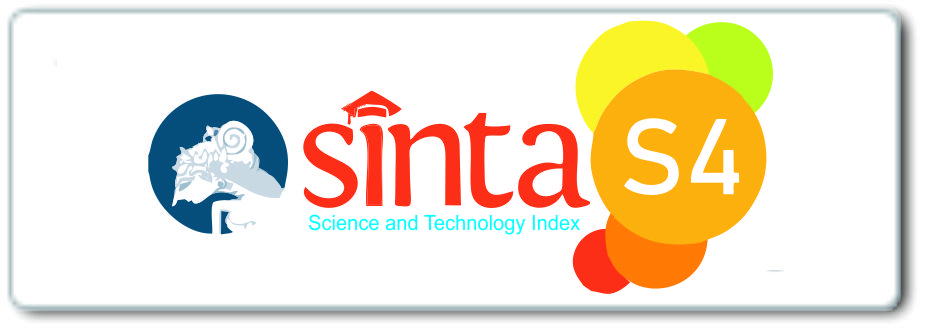Screening Behavioural Disorders of Children Affected by Screentime with Real Computer Vision Technology
Keywords:
screentime, communication, personal socialAbstract
Introduction: In the development cycle of early childhood, several internal and external factors can influence changes such as disruption, delay or improvement. One of the external factors highlighted in this study is the application of screen time. Screen time in early childhood is highly recommended not to exceed 1 hour/day. This study aims to analyse the impact of screen time on behavioural disorders in the communication and personal social aspects of children aged 0-3 years at the Menur 6 Kartasura Children's Posyandu, using computer vision technology to monitor children's behaviour. Methods: The study used a quantitative study with a cross-sectional design. Statistical tests used the T-test. The number of samples is the total of the population aged 1-3 years as many as 24 respondents. The instruments used were interviews and observations with the ASQ-3 guidelines that had been developed in the form of computer real vision technology. Results: The results of the study showed that in the communication aspect there were 6 children in the category of needing stimulus and 18 children in the normal category, while in the personal social aspect there were 7 children in the category of needing stimulus and 17 others in the normal category. The analysis test of excessive screen time application is related to behavioural disorders, such as addiction, delayed language development, and social-emotional disorders. Conclusion: However, for behavioural aspects such as communication and personal social, there is no relationship between them. This finding emphasises the importance of parents' role in managing children's screen time to support optimal development.
Downloads
References
Faris Naufal, A., & Rosepti Farlinda, A. (2023). Relationship Between Parents' Level Of Understanding Of Stimulation And Gross Motor Skills Of 15-Month-Old Children At Pediatric Therapy Centre Ngawi. 4(3). Https://Doi.Org/10.23917/Fisiomu.V4i3.21964
Fitra Mayenti, N., Kep, S., Kep, M., Sunita, I., Kes, M., & Lecturer Stikes Al-Insyirah Pekanbaru, S. (N.D.). Impact Of Gadget Use On The Development Of Early Children In PAUD And TK Taruna Islam Pekanbaru. In Photon Journal (Vol. 9, Issue 1).
Gustian Sobry, M. (2017). The Role Of Smartphones On Children's Growth And Development. Journal Of Indonesian Teacher Research-JPGI, 2(2).
Liu, X., Luo, Y., Liu, C., Liu, Z.-Z., Yang, Y., Liu, J., & Jia, C.-X. (N.D.). Elsevier Editorial System(Tm) For. Https://Ssrn.Com/Abstract=3413601
Novianti, R., & Garzia, M. (2020). Gadget Use In Children; New Challenges For Millennial Parents. Journal Of Obsession: Journal Of Early Childhood Education, 4(2), 1000. Https://Doi.Org/10.31004/Obsesi.V4i2.490
Nurhamida, Masnipal Marhun, & Dinar Nur Inten. (2023). Descriptive Study Of Screen Time Application On Early Childhood Development Aspects. Journal Of Paud Teacher Education Research, 55-62. Https://Doi.Org/10.29313/Jrpgp.V3i1.2031
Nurhidayah, I., Gilar Gunani, R., Ramdhanie, G. G., Hidayati, N., Nursing, F., & Padjadjaran, U. (2020). Detection And Stimulation Of Social Development In Preschool Children: A Literature Review. Journal Of Paediatric Nursing Science, 3(2). Https://Doi.Org/10.26594/Jika.1.2.2020
Nurmalitasari, Femmi. 2015. "Social Emotional Development In Preschool-Aged Children." Psychology Bulletin 23(2):103-11.
Roida Simanjuntak, S., & Sam Ratulangi University Nursing Science Study, P. (N.D.). Literature Review: The Influence of Screen Time On Children's Behavioural Problems. In Journal of Nursing (Vol. 11, Issue 1).
Setyarini, D. I., Rengganis, S. G., Ardhiani, I. T., & Mas'udah, E. K. (2023). Analysing The Impact Of Screen Time On Potential Tantrums And Early Childhood Development. Journal Of Obsession: Journal Of Early Childhood Education, 7(2), 2496-2504. Https://Doi.Org/10.31004/Obsesi.V7i2.3376
Sukamti, Endang Rini. 2018. Motor Development.
Wahyuni, Candra. 2018. Complete Guide To Child Growth And Development Age 0-5 Years STRADA PRESS.
Downloads
Submitted
Accepted
Published
How to Cite
Issue
Section
License
Copyright (c) 2025 Fisio Mu : Physiotherapy Evidaces Journal

This work is licensed under a Creative Commons Attribution-NonCommercial-NoDerivatives 4.0 International License.

This work is licensed under a Creative Commons Attribution-NonCommercial 4.0 International License.
Authors who publish with FISIO MU: Phsiotherapy Evidences agree to the following terms:
- Author(s) retain copyright and grant the journal right of first publication with the work simultaneously licensed under a Creative Commons Attribution-NonCommercial 4.0 International License that allow others to share the work within an acknowledgement of the work’s authorship and initial publication of this journal.
- Author(s) are able to enter into separate, additional contractual arrangement for the non-exclusive distribution of the the journal’s published version of the work (e.g. acknowledgement of its initial publication in this journal).
- Author(s) are permitted and encouraged to post their work online (e.g. in institutional repositories or on their websites) prior to and during the submission process, as it can lead to productive exchanges, as well as earlier and greater citation of published works.












